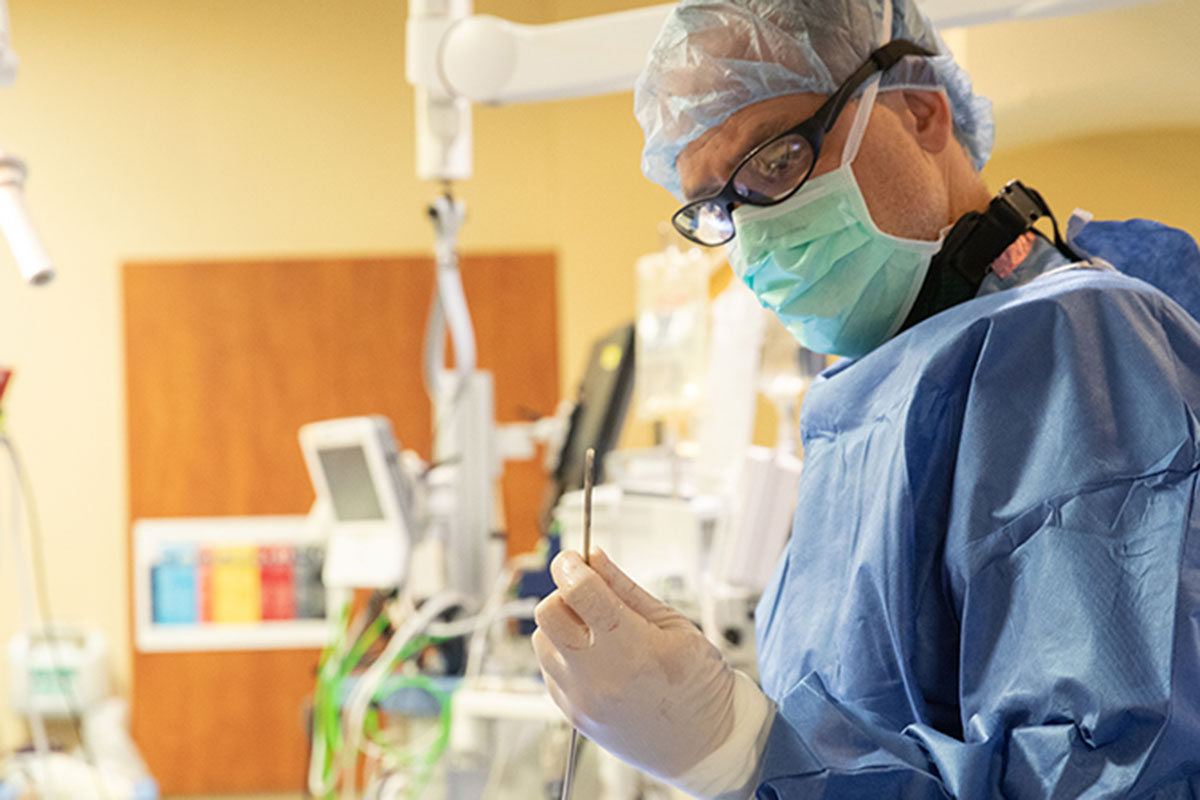-
Services
Featured Specialties
-
Locations
Location Type
-
Patients & Visitors
Published May 31, 2022

For patients with atrial fibrillation or a-fib – a heart rhythm disorder – an increased risk for stroke comes with the territory.
For those with non-valvular a-fib – a type of abnormal heartbeat not caused by a heart valve problem – a new device called the WATCHMAN FLX™ is becoming a popular, permanent solution for reducing stroke risk when blood thinners are not an option.
“We have had an excellent experience at Bridgeport Hospital with our Watchman implants,” said Murali Chiravuri, MD, PhD, an electrophysiologist with Northeast Medical Group, part of Yale New Haven Health. Dr. Chiravuri and his colleagues – electrophysiologist Robert Winslow, MD, and echocardiographer Ari Pollack, MD – have routinely performed the minimally invasive procedure in the electrophysiology lab since it was first offered at the hospital in early 2020.
“The Watchman really holds a unique place in stroke prevention for patients with atrial fibrillation,” Dr. Winslow said. “In a-fib, the biggest risk for patients in the long run is the risk of stroke, and the greatest benefit you can provide them, long-term, is in reducing their risk of stroke. Historically, that had been done through blood thinners, which work very well; they reduce stroke risk by about 75 percent compared to no blood thinners.”
Blood-thinners – or anticoagulants – have long been used to reduce stroke risk by making it less likely that pooled blood will clot, break off and travel to the brain. But because anticoagulants slow the clotting of blood, they can pose a risk for some people who may be more susceptible to injury at home or work.
“We also see people where, as they get older, may develop balance problems and problems with their gait, and may have recurring falls,” said Victor Mejia, MD, an interventional cardiologist with Northeast Medical Group, who conducts the procedure in the cardiac catheterization lab with his colleagues, electrophysiologist Adam Lottick, MD, and echocardiographer Sik Hur, MD. “As a result, we worry about the potential for internal bleeding. I’ve seen patients who have developed significant intra-abdominal or intracranial bleeding after a traumatic fall,” said Dr. Mejia, who is also co-medical director of the cardiac catheterization lab. "Those patients are the ones that can really benefit from the Watchman device.”
The Watchman implant procedure involves implanting a small, parachute-shaped metal device into the left atrial appendage in the upper left chamber of the heart.
“The procedure itself is actually well-tolerated,” Dr. Chiravuri said. “Our typical procedural times have been, on average, about one hour, and patients stay overnight for observation. They can go home the next day and pretty much can resume activities of daily living.”
About 45 days later, a transesophageal echocardiogram – a type of ultrasound test – is repeated to ensure that the device is sealed in and working well; at that point, patients can be taken off blood thinners.
“Right now, the device is really reserved for people who can’t be on long-term blood-thinning,” Dr. Winslow said. “But there are many studies looking at the utility in patients who may be able to tolerate blood thinners but do not want to be on them long term. We’re not really ready for those patients yet, but that data are being generated to see if the indication will expand to greater percentages of atrial fibrillation patients.”
Learn more about Heart and Vascular services at Bridgeport Hospital.